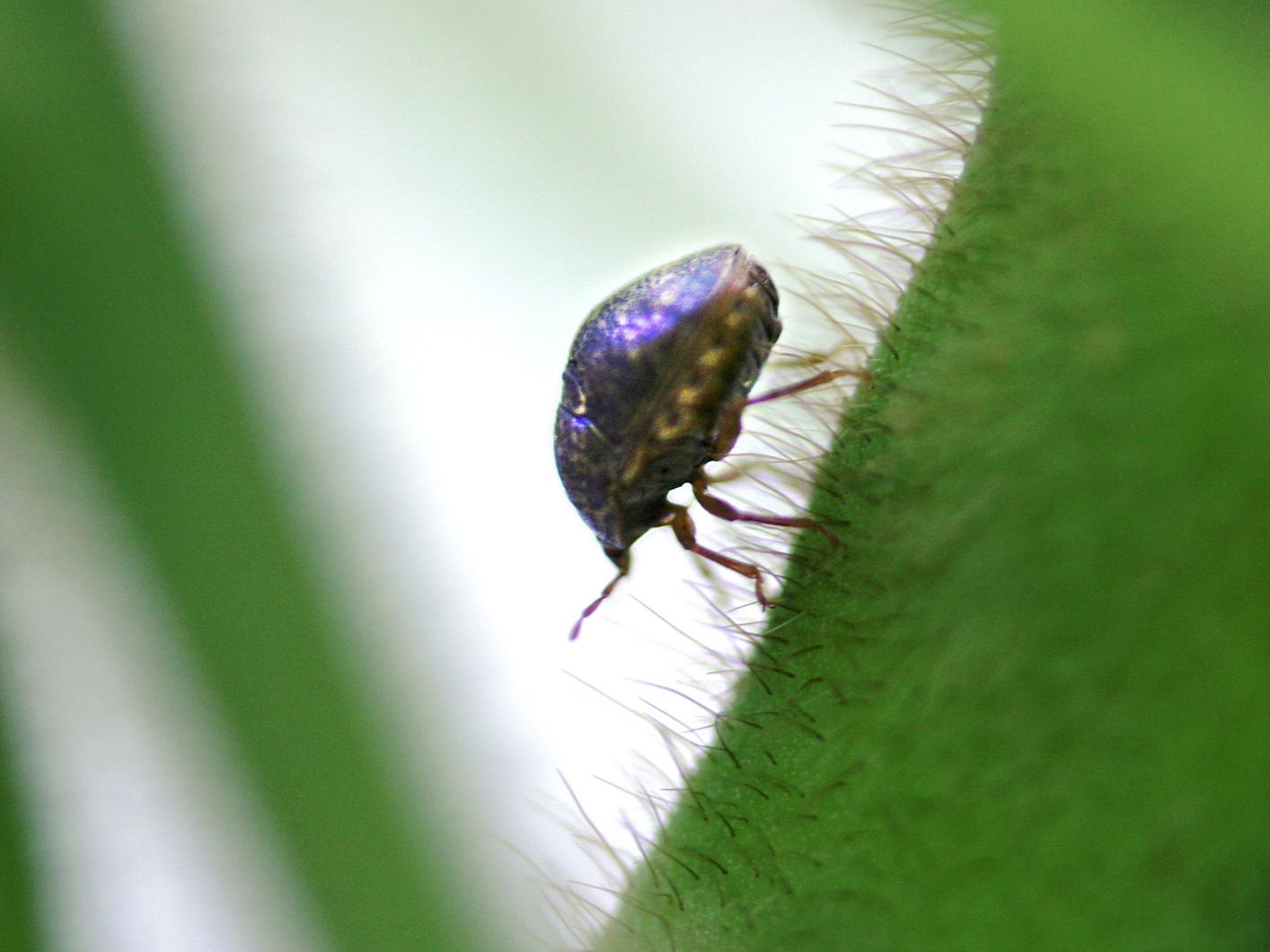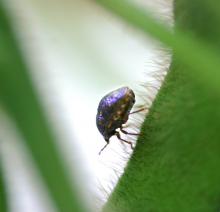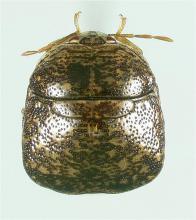Information Possibly Outdated
The information presented on this page was originally released on July 20, 2012. It may not be outdated, but please search our site for more current information. If you plan to quote or reference this information in a publication, please check with the Extension specialist or author before proceeding.
Soybeans need moisture to finish season strong
MISSISSIPPI STATE – Recent rains and irrigation have helped portions of Mississippi’s soybeans recover from June’s dry spell, but more moisture is needed to complete the season.
“We are thankful for the rain that we’ve received this growing season, and we all know it is a blessing,” said Trent Irby, Mississippi State University Extension Service soybean specialist. “But we still have several weeks to go in many areas, and additional moisture certainly will be needed to finish making the crop.”
Irby said the state’s soybean crop looks good.
“Our earliest planted soybeans are in the late reproductive stage with a few areas beginning to change color,” he said. “The later-planted portion of the crop, as well as the double-crop acres, are close to or have already reached the bloom phase. Sufficient moisture is needed during these reproductive stages to help the crop load up and fill pods.”
Planting began in late March this year and continued through early July. The U.S. Department of Agriculture reports Mississippi has 2.13 million soybean acres this year.
“Many of the state’s producers practice an early planting system where earlier maturing varieties are planted to assist with managing for late-season pest pressure and drought stress. This system also allows producers to harvest earlier in the fall.”
At this point in the season, the earlier soybeans have the advantage.
“Things were relatively uneventful up until mid-July,” Irby said. “Much of the earlier portion of the crop will likely finish the season without too much pressure from disease or insects, but our later-planted soybean crop, particularly the double-crop portion, will need to be monitored closely so that timely insect and disease management practices can be applied to minimize any negative effects on yield.”
A new invasive pest was recently added to the list of insects Mississippi soybean growers must watch for -- the kudzu bug. In mid-July, the small Asian beetle was discovered in Warren and Montgomery counties.
MSU Extension row crop entomologist Angus Catchot said entomologists and growers in neighboring states have experience fighting the insect.
“Entomologists in the Southeast have been working with this pest for several years, and they say we can control the pest fairly easily with the currently registered insecticides already used in soybeans,” Catchot said. “It’s not in Mississippi’s soybeans yet. It may take one to three years, but we expect to see it in soybeans in the near future. I think we’ll be able to manage this pest when it hits.”
Catchot said kudzu bugs are probably in other areas of the state.
“We’re going to start doing extensive surveys soon. Mississippi producers have consultants who look at nearly every acre of soybeans, so I do not think it will catch us by surprise,” he said. “Once we learn more, I’m confident the Extension Service will provide education to growers on when to treat and what to treat with.”
Extension plant pathologist and Mississippi Agricultural and Forestry Experiment Station scientist Tom Allen said he is seeing increasing evidence of foliar diseases in soybeans.
“Frogeye leaf spot is one of the hottest topics in soybeans right now,” Allen said. “I’m seeing a lot more of it this year. In the past three years, I’ve sent a total of five samples to a lab for fungicide resistance analysis, and this year I’ve already sent five samples with several more to send. So far, the strain of the fungus that is resistant to a certain class of fungicides hasn’t been found in Mississippi.”
This year has also been unique in that the earliest case of soybean rust in the state was discovered July 13.
“That is a rarity, and I was shocked,” Allen said. “Cooler temperatures with relatively high humidity and scattered showers are optimum for soybean rust development.”
In spite of these challenges, producers have reason to be optimistic.
“We account for about 2 to 3 percent of the national production,” said Extension agricultural economist John Michael Riley. “Although dryness in early June could have reduced the crop’s overall potential, Mississippi’s crop will still likely fare better than those in the Midwest.”
Riley said the Midwestern drought continues to take center stage.
“Last week soybean futures contracts reached record highs -- the September contract peaked at $17.30/bushel on July 20,” Riley said. “But the prospect of rain has brought down those prices about $1/bushel over the past few days.”
Nationally, 35 percent of the crop is rated “poor” and “very poor,” Riley said, while 31 percent is rated “excellent” and “good.” In Mississippi, 7 percent is rated “poor” and “very poor,” while 71 percent is rated “excellent” and “good.”
“National yields are in jeopardy, as are the number of acres that producers might simply walk away from, thus dropping the total number of acres harvested. All of this combined is why soybean prices have soared since mid-June,” Riley said.
Current prices at Mississippi elevators are just over $16/bushel for the crop that is currently in the ground.
Soybeans ranked third on Mississippi’s roster of commodities in 2011, with an $860 million production value.
For more information on Mississippi’s crops, visit http://www.mississippi-crops.com.









